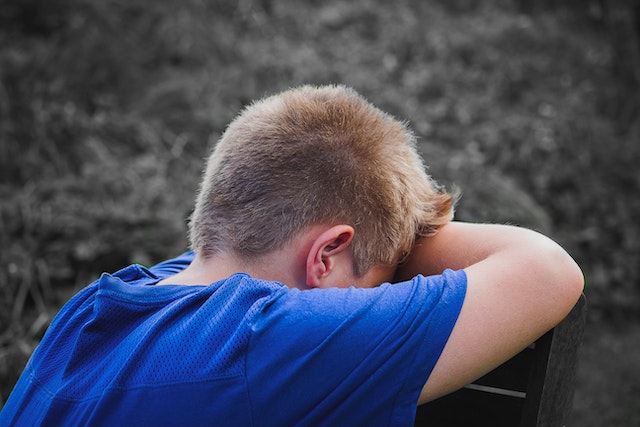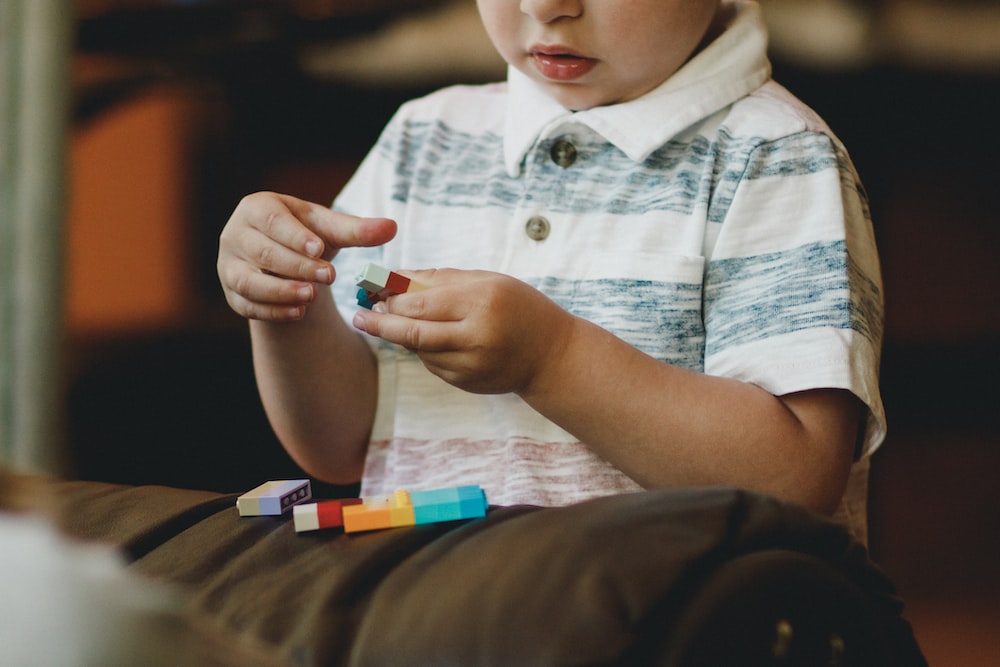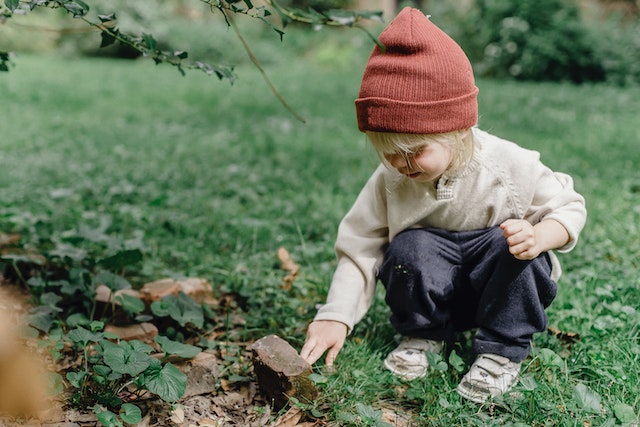Amidst all the hustle and bustle of our busy world, finding moments of peace for our children is like giving them a priceless treasure. Luckily, simple yet powerful calming strategies for kids can help them find that inner serenity. Whether it’s a calming bedtime routine or practicing mindfulness, these strategies act as a magical gateway to tranquility, even amid chaos.
Math & ELA | PreK To Grade 5
Kids see fun.
You see real learning outcomes.
Watch your kids fall in love with math & reading through our scientifically designed curriculum.
Parents, try for free Teachers, use for free
The best calming strategies for kids are effective, reliable, and repeatable. You can use a mix of such techniques and create an environment of open communication to help your child understand their emotions better.
“The ideal of calm exists in a sitting cat.” ― Jules Renard
How Do I Recognize the Signs of Stress Sooner?

Recognizing the signs of stress in your child is essential for effective parenting. You can employ appropriate strategies to help your child calm down by identifying these signs. It’s important to note that different age groups may require different approaches to managing stress, so it’s crucial to explore a range of options.
Here are some signs to watch out for:
- Increased frequency of acting out, disruptive behavior, and angry outbursts.
- More frequent occurrences of illness, such as fevers, colds, and recurring coughs.
- Withdrawal from daily activities, family events, and functions.
- Changes in appetite and sleep disturbances.
- Heightened irritability throughout the day.
- Showing anger towards activities they used to enjoy, such as school or visiting the park.
By being attentive to these signs, you can intervene early and provide the necessary support to help your child effectively manage their stress.
4 Reasons Why Calming Down Strategies Are Important for Parenting?

Knowing how to calm kids down for parenting cannot be overstated. These strategies are crucial in promoting emotional well-being, maintaining a positive parent-child relationship, and fostering a healthy and nurturing environment at home.
1. Firstly, calming strategies teach children how to regulate their emotions effectively. By learning how to calm down, children develop essential skills to cope with stress, frustration, and other challenging emotions.
2. Secondly, these strategies promote conflict resolution skills. They provide an opportunity for parents and children to address conflicts and disagreements in a calm and constructive manner.
3. Thirdly, engaging in calming activities creates a space for parents and children to connect on a deeper level. Whether it’s engaging in a soothing bedtime routine, practicing deep breathing exercises, or participating in a calming hobby, these shared experiences strengthen the parent-child bond and promote a sense of trust and security.
4. Lastly, calming strategies create a positive and nurturing environment at home. By creating a calm and peaceful atmosphere, parents can enhance their emotional resilience and create a conducive environment for their children’s emotional and psychological development.
Effectiveness of Calming Strategies

Calming techniques for kids are highly effective when used in conjunction with direct communication and emotional connectivity. You can even mix it up and use different strategies at different times to give your kids new stimuli and modes of expressing their emotions.
These calming strategies for kids will also help you better navigate the world of parenting. You can reduce the levels of stress in your own life by using these reliable techniques each time. You can also create a more positive environment within the house by limiting outbursts, bad behavior, and anger.
67 Best Calming Strategies for Kids!

- Get your kids moving with exercises like squats, running, or jumping jacks to release stress through physical activity.
- Encourage your kids to journal their emotions and feelings as a way to promote calmness.
- Encourage your kids to seek comfort through hugs, cuddles, kisses, and affirmations, establishing a positive relationship with stress.
- Engage your kids in artistic activities like drawing, pottery, or clay-making to help them find calm.
- Teach your kids deep breathing techniques, like yoga, meditation, or mindfulness, to better manage stress. Research from Stanford University shows that deep breathing can significantly improve a child’s approach to stress physiologically. By using slow breathing, mindfulness, sensory boxes, and other activities, you can improve your child’s path to understanding stress.
- Treat your younger kids to a warm bath, a soothing and effective calming strategy.
- Allow your kids to play with their favorite toys, providing a distraction and promoting calmness.
- Consider chewing gum as a calming strategy suitable for kids of all ages.
- One of the best calming activities for kids is to read a storybook to your kids to help them calm down more quickly and relax.

- Playing relaxing or classical music can help children find calmness.
- Providing soft items like teddy bears can be an incredibly soothing and comforting strategy when it comes to calming techniques for toddlers.
- Engaging in bubble wrap popping can be a calming activity for kids.
- Having a dance party with their favorite music can uplift and relieve stress.
- Taking a walk in a park can help shift kids’ perspectives and reduce stress.
- Planning a fun activity together can serve as a calming strategy for kids.
- Creating a bracelet as a symbol of love and support can comfort children.
- Help your kids develop emotional awareness by encouraging them to identify and name their emotions, such as anger, frustration, sadness, or fear, according to their age group.
- Provide a calming activity like molding silly putty, which can help children relax and divert their attention.
- Engage your kids with a Lego project to keep them focused when bored or to distract them when they’re moody.

- Letting them watch their favorite TV show and sing along to the songs can help them relax.
- Teach your kids to count to 5 to redirect their focus to the present moment.
- Karaoke or acapella singing can bring fun and joy back into your kids’ lives.
- Address their basic needs by asking if they’re hungry, sleepy, or thirsty, as these can contribute to crankiness.
- Create a sensory play box filled with beads, colors, threads, cotton, clay, and other engaging materials.
- Encourage your kids to make a feelings box to express and process their emotions.
- Foster confidence and emotional understanding by emphasizing positive affirmations.
- Lift their spirits instantly by singing a cheerful tune or a funny song.

- Provide tissue paper sheets for your kids to crumple up when they’re feeling aggravated.
- Introduce a pet into the household to keep your kids happy and joyful.
- Involve them in a backyard gardening project.
Related Reading: How to Make Gardening With Children Fun and Educational
- Engage in pretend play and dress-up activities to give them a break from their everyday experiences.
- Organize a treasure hunt to keep your kids busy throughout the day.
- Give your kids a stress squeeze toy to release their frustration temporarily.
- Go for a bike ride to distract their minds from stress and engage their balancing and coordination skills.
- Guide them in visualizing a happy place, providing detailed descriptions and encouraging imagination.
- Have them count backward from 50 to redirect their focus and forget about what frustrated them.
- Calm their minds by going nature-watching, and spotting birds, butterflies, flowers, and other visually stimulating things.

- Practice focus-based exercises by blowing bubbles and having kids balance them on their fingertips.
- Use a weighted stuffed animal to help younger kids experience a sense of calmness.
- Create a sensory tunnel and engage kids in various activities inside it.
- To create a safe and peaceful space, build a fort together using sheets, pillows, toys, and objects.
- Introduce scented candles to provide a different sensory experience for kids.
- Engage in stretching exercises to release tension and improve core strength.
Related Reading: Workouts for Kids That Teaches Them Discipline & Focus
- Let kids spend time outside drawing with chalk on the driveway.
- Share compliments with your kids to boost their self-esteem and show appreciation.
- Encourage kids to close their eyes and visualize a peaceful and happier scenario.
- If available, let kids burn off excess energy on a trampoline.
- Foster self-expression by encouraging kids to play a musical instrument.

- Encourage your kids to engage in funny animal walks, pretending to be dogs, cats, cows, and other animals.
- Help them release frustration by jumping rope or skipping in a designated space.
- Relieve stress by encouraging your kids to make silly faces.
- Create a soothing atmosphere by playing nature sounds or finding relaxation videos on YouTube.
- Provide coloring books for your kids to distract themselves and find relaxation through coloring.
- Bond with your kids by brushing their hair, applying oil, or doing other enjoyable grooming activities.
- Create a magical experience by turning off the lights and telling stories through shadow puppets using a flashlight.
- Keep your kids engaged and entertained by trying new hairstyles, nail paints, and accessories.
- Hang up calming posters in their rooms as gentle reminders not to get easily stressed out.
- Encourage your kids to trace their hands in arts and crafts activities for added fun.
- Spend quality time with your kids by baking together, and enjoying an engaging and rewarding activity.

Related Reading: Best & Fun Preschoolers Cooking Activities With Recipe
- Organize a talent show for your kids, where they can showcase their toys and perform while you act as the audience.
- Teach your kids to ask for a break if they start feeling stressed in the classroom.
- Help your kids reconnect with their bodies and the present moment by encouraging them to wiggle their fingers and toes.
- Teach your kids a breathing exercise where they inhale and count to 4, then exhale. Repeating this exercise helps them reoxygenate and feel at ease.
- Use fidget toys to calm your kids down effectively.
- Have your kids bathe their toys as a calming activity.
- Let your little ones enjoy running through sprinklers or sliding on a slip & slide.
- Create a designated relaxation space for your children with their favorite snacks, toys, and books.
Important Points to Remember About Calming Strategies

When it comes to utilizing calming strategies for kids, there are a few key points to remember. These reminders will help you effectively implement and maximize the benefits of these techniques.
“Within you, there is a stillness and a sanctuary to which you can retreat at any time and be yourself.” ― hermann hesse
1. Individualization
Calming strategies may vary from child to child, so it’s important to find what works best for your child’s unique needs and preferences.
2. Consistency
Practice calming strategies regularly to help your child build familiarity and reinforce their effectiveness. Consistency is key in integrating these strategies into daily routines. According to research, spending even a few minutes a day of quality time and attention can help your kids manage stress better.
3. Role modeling
Be a role model for your child by practicing calming strategies yourself. Children learn by observing and imitating, so demonstrating these techniques will encourage their adoption.
4. Patience and practice
Calming strategies may take time for your child to master. Encourage patience and provide opportunities for regular practice to help them develop and refine these skills.
5. Communication and validation
Encourage open communication with your child about their emotions and experiences. Validate their feelings and provide a safe and supportive environment to express themselves.
6. Positive reinforcement
Acknowledge and praise your child’s efforts in using calming strategies. Positive reinforcement enhances their motivation and confidence in utilizing these techniques.
Remember, calming strategies for kids are helpful during moments of stress and can contribute to overall emotional well-being and resilience in your child’s daily life.
Related Reading: Best Positive Reinforcement Tips For Teachers & Parents
Conclusion
With this comprehensive list of calming down strategies for kids, you now have an extensive toolkit to help your child find peace and tranquility. Remember to tailor the strategy to your child’s unique needs and preferences, stay consistent, and lead by example. By incorporating these calming strategies into your parenting journey, you can create a nurturing environment where your child can thrive and navigate the ups and downs of life with resilience and calmness.
Frequently Asked Questions (FAQs)
How do you teach calming strategies?
Teach calming strategies by modeling them, providing clear instructions, and practicing them with your child. Encourage deep breathing, mindfulness exercises, and using positive self-talk.
What is a calming strategy?
A calming strategy is a technique or activity used to help individuals regulate their emotions and achieve a state of calmness. It can include deep breathing, visualization, relaxing exercises, or mindfulness.
What are 5 ways to calm down?
Five effective ways to calm down include deep breathing exercises, engaging in physical activities like yoga or stretching, practicing mindfulness or meditation, engaging in a calming hobby or activity, and seeking support from a trusted person to talk about your feelings.
























